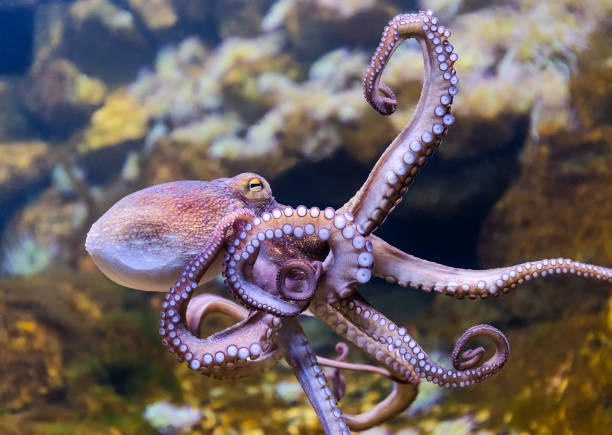The Enigmatic World of Deep-Sea Cephalopods
In the abyssal depths of our oceans, a realm of mystery and wonder unfolds. Here, in the inky blackness where sunlight never penetrates, extraordinary creatures thrive, defying our understanding of life itself. Among these remarkable inhabitants, deep-sea cephalopods reign supreme, captivating scientists and marine enthusiasts alike with their otherworldly adaptations and enigmatic behaviors.

Masters of Bioluminescence
One of the most captivating features of deep-sea cephalopods is their ability to produce and manipulate light through bioluminescence. This remarkable adaptation serves multiple purposes, from communication and camouflage to attracting prey and confusing predators. The vampire squid, for instance, can activate light-producing organs called photophores scattered across its body, creating a dazzling display that disorients potential threats.
Extreme Morphological Adaptations
Deep-sea cephalopods exhibit an astounding range of physical adaptations that enable them to survive in their harsh habitat. The colossal squid, which can grow up to 14 meters in length, possesses the largest eyes in the animal kingdom, measuring up to 25 centimeters in diameter. These enormous eyes allow the squid to detect the faintest glimmers of light in the perpetual darkness of the deep ocean, giving it a crucial advantage in hunting and avoiding predators.
Bizarre Feeding Strategies
The scarcity of food in the deep sea has led to the evolution of ingenious feeding strategies among cephalopods. The vampire squid, despite its menacing name, is actually a gentle detritivore that uses two long filaments to capture marine snow – a constant shower of organic matter falling from upper ocean layers. Other species, like the glass squid, have developed transparent bodies that make them nearly invisible to both predators and prey, allowing them to ambush unsuspecting victims with deadly precision.
Reproductive Marvels
Reproduction in the deep sea presents unique challenges, and cephalopods have developed fascinating strategies to overcome them. The blanket octopus exhibits one of the most extreme cases of sexual dimorphism in the animal kingdom, with females growing up to 40,000 times heavier than males. Male argonaut octopuses, on the other hand, have evolved a detachable arm filled with sperm, which they present to females during mating – a phenomenon known as hectocotylus.
Technological Advancements in Deep-Sea Exploration
Recent advancements in deep-sea exploration technology have revolutionized our ability to study these elusive creatures in their natural habitat. Remotely operated vehicles (ROVs) equipped with high-definition cameras and sophisticated sampling tools now allow scientists to observe and collect data on deep-sea cephalopods without the need for manned submersibles. These innovations have led to the discovery of numerous new species and have provided unprecedented insights into the behavior and ecology of these mysterious animals.
Conservation Challenges in the Abyss
Despite their remote habitat, deep-sea cephalopods face growing threats from human activities. Deep-sea mining, which targets valuable mineral deposits on the ocean floor, poses a significant risk to these fragile ecosystems. The noise pollution generated by shipping and oil exploration can disrupt the delicate balance of deep-sea communities, affecting everything from communication to navigation for these highly sensitive creatures.
The Future of Deep-Sea Cephalopod Research
As our understanding of deep-sea cephalopods continues to grow, so does our appreciation for their importance in marine ecosystems and their potential applications in various fields. Ongoing research into the unique proteins that allow these animals to function under extreme pressure could lead to breakthroughs in medical treatments for conditions like high blood pressure. Additionally, the study of cephalopod camouflage mechanisms may inspire new technologies in fields ranging from military applications to adaptive materials science.
In conclusion, the enigmatic world of deep-sea cephalopods continues to captivate and inspire researchers and enthusiasts alike. As we push the boundaries of ocean exploration, these remarkable creatures serve as a testament to the incredible diversity and resilience of life on our planet. By unraveling the mysteries of the deep, we not only gain invaluable scientific knowledge but also develop a deeper appreciation for the importance of preserving these unique and fragile ecosystems for future generations.





